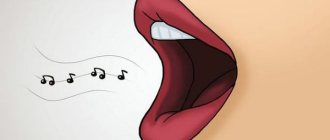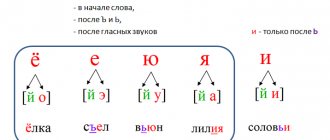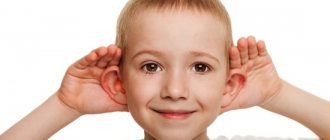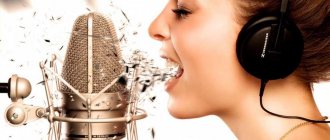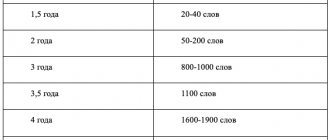Knowing the range of your own voice is useful for every musician. We are talking not only about vocalists, but about all people involved in music - composers, guitarists, pianists. Knowing the range helps you write music in comfortable keys (or choose minuses in the desired keys), as well as rework vocal parts in such a way as not to tear the ligaments. SAMESOUND.RU explains how to determine your vocal range in order to correctly describe your own vocals.
How to describe your own voice?
Let's imagine that a musician responded to an ad from a local band looking for a guitarist with a good voice. The band members ask the musician what kind of voice he has. How to answer this question?
There are three ways to describe your vocals:
- Compare your voice with another vocalist. This method is obviously a failure, since no one will believe that you sing just like Robert Plant;
- Give a general description of your vocals. For example, say that you are a lyric baritone, rock tenor or rock alto. This description is easier to understand, but does not provide useful information;
- Talk about the range of your voice, noting the lowest and highest notes you can sing. This is the most informative and normal way to describe vocals.
Despite the clarity of the third method, musicians often give incomplete information about the vocal range. Many students who come to me say that they can sing all the notes from low C to B flat, but do not specify which octaves they are talking about.
Main types of singing voices
It must be said that determining your voice type, especially from a very early age, is not such an easy task. The Italian opera school offers its own classification of types of vocal voices, from high to low:
- Soprano
- Mezzo-soprano
- Contralto
- Tenor
- Baritone
- Bass
These are the main types of singing voices. But it is worth saying that even now the boundaries of this classification are somewhat blurred, and only a professional can accurately determine the type. Nevertheless, it is quite possible to approximately determine your vocal abilities. And from an early age. What are children's voices like? Compared to adults, there are slightly fewer children's vocal types. However, with age, the voice can change - this happens most often with teenage boys (voice breaking). Basically, children have high voices; this type, regardless of gender, is called soprano. There is also a type of voice in boys that sounds close to a female soprano, it is called a treble. Low children's voices are called alto.
Voice failure in adolescence often causes grief among young singers and their parents. But experienced teachers know that there is no need to worry - the voice will simply “regenerate” into an adult type. So, often trebles become tenors or baritones, altos become dramatic baritones and basses. Girls' low voices are often “reborn” into mezzo-soprano or contralto. But it’s also worth knowing that children’s voices are just being formed at such a young age, and may well later become both higher and lower.
How to determine your voice range?
To accurately determine the range of your voice, it is enough to refer to music theory and the octave system of grouping notes. All sounds that we can use in music and that are distinguishable by the human ear are divided into 9 octaves. Each C note has a number attached to it, indicating the octave it belongs to.
| Number | Octave name |
| 0 | Subcontractave |
| 1 | Contractave |
| 2 | Major octave |
| 3 | Small octave |
| 4 | First octave |
| 5 | Second octave |
| 6 | Third octave |
| 7 | Fourth octave |
| 8 | Fifth octave |
Thus, Before the sub-contractive will be denoted as C0, Before the contra-octave - C1, and so on. All other notes within the octave are also designated by the corresponding number: F of the counter-octave - F1, Sol of the first octave - G4, E of the fifth octave - E8. The note C of the first octave is located in the middle of the 88-key keyboard and is often taken as the starting point (in Western musical tradition it is also called Middle C).
You can determine your vocal range using a piano or Piano Roll in your DAW. Start your search for sounds you can sing with C first octave (C4). If you can sing the sound clearly, move down and then up, testing the notes available to your voice. The last sounds above and below that you were able to sing cleanly and without discomfort to yourself and your ligaments are the boundaries of your vocal range.
The majority of voices belong to the general boundary from C of the major octave (C2) to F of the third octave (F6). At the same time, a number of subranges have been introduced within the C2-F6 range, allowing for more accurate characterization of vocals.
The notes A and B of the small octave (A3, B3) and C and D of the first octave (C4-D4) are available to all people. Men and women of all voices sing these notes clearly.
Despite the strict sound boundaries, you can easily play notes above or below a certain range. However, your vocal range only includes those notes that you can sing with ease and without discomfort in any situation.
| Name | Affiliation | Notation | Decoding the notation |
| Bass | Male | E2-D4 | From E of the major octave to D of the first octave |
| Baritone | Male | F2-G4 | From Fa of the major octave to Sol of the first octave |
| Tenor | Male | A2-C5 | From A major octave to C second octave |
| Alto | Female | E3-G5 | From E of the small octave to G of the second octave |
| Mezzo-soprano | Female | E3-B♭5 | From E of the small octave to B flat of the second octave |
| Soprano | Female | G3-C6 | From G of the small octave to C of the third octave |
Each type of voice has many subtypes that specify the range of available notes (for example, the baritone is divided into lyric, dramatic and tenor-baritone), but such clarifications are of no practical use to ordinary musicians.
Divine gift. Types of female voices
In the old days, all girls born into noble families had to be able to sing.
However, even among the common people, girls often sang, both on vacation and holidays, and at work, to brighten up the monotony of everyday work. Beautiful voices have always been considered a divine gift. Now, alas, very little attention is paid to the vocal education of children in regular schools, and you can develop your voice in vocal classes in music schools or in vocal clubs. However, if you want, you can learn to sing even as an adult. Moreover, vocal lessons are generally beneficial for women. So what are the different types of female singing voices? There are three main types:
- Soprano . This is the highest type of female vocal voice. Although it is considered the sharpest and brightest, it has its own charm. As a rule, it is the ladies who master such a voice who most often perform the parts of young princesses.
- Mezzo-soprano . Very beautiful deep voice. He is more chesty and “adult” than the soprano.
- Contralto is the lowest female voice. Differs in depth and velvet shades. Not harsh, soft to the ear and very pleasant to the ear.
Method 3: Dictaphone
The Dictaphone web tool functions as a voice recorder, allowing you to check your voice online. The advantage of using such a web service is that you can familiarize yourself with each fragment in detail, paying attention to important details.
Go to the Dictaphone online service
- Go to the Dictaphone online service by clicking on the link above and start recording audio immediately.
- Allow access to the microphone.
- Monitor the recording progress on the timeline in real time, and if necessary, stop it by clicking on the microphone icon again.
- Click the “Play” button to play the resulting recording and understand how well the voice is recorded.
- Move the slider to listen to specific passages.
We are glad that we were able to help you solve the problem. In addition to this article, there are 12,562 more instructions on the site. Add the Lumpics.ru website to your bookmarks (CTRL+D) and we will definitely be useful to you. Thank the author and share the article on social networks.
Describe what didn't work for you. Our specialists will try to answer as quickly as possible.
What is “absolute pitch”?
Before you start training with this simulator, you might be wondering what exactly is “absolute pitch”? Let us immediately note that the term “perfect pitch” is incorrect.
Absolute pitch is a multi-level ability.
- The most basic level is pitch sensitivity . Perhaps you have already found yourself in the following situation. You are familiar with a piece of music written, say, in the key of C major. You've heard it many times. And then you hear it in a different key. For example, E major. And you immediately feel that this is no longer the same work: something has changed! This sensitivity to pitch is a very good sign. Essentially, this means that by practicing, you can reach the next level.
- Once you reach this level, you will be able to identify notes played on one musical instrument without listening to the "reference" note . Most people need to train a lot to achieve this.
- A higher level of absolute pitch will allow you to recognize the notes of different musical instruments.
- And the highest level is called “active absolute pitch . This is when you are able to sing a note without first hearing the “reference” note.
These levels sometimes overlap. For example, after a certain amount of practice, you can learn to recognize one or two notes produced by several instruments. It may also happen that you learn to sing a certain note correctly before you begin to recognize all 12 notes of the chromatic scale well.
This online absolute pitch trainer is designed to help you develop your hearing, no matter your current level.
Method 1: OnlineVoiceRecorder
The first online service is called OnlineVoiceRecorder, and from the name it is already clear that its functionality is focused on voice verification.
Go to the OnlineVoiceRecorder online service
- Open the OnlineVoiceRecorder online service, where you can immediately click on the red button with a microphone to start recording.
- If a pop-up notification appears on your screen, select "Allow" there.
- Recording will begin, and volume fluctuations will be monitored by a special line that changes the state in real time. OnlineVoiceRecorder has only two control tools: the first stops recording completely, and the second pauses it.
- Now you can trim the recording or listen to it to check the voice quality.
- If necessary, download this track or close the form and start recording a new one.
What affects the sound
- Smoking can cause your speech tone to become several tones lower.
- Lack of sleep and poor nutrition. Also, the mood, regardless of good or bad, affects the timbre.
- Colds. During this period, the sound becomes low and dull, and in some cases hoarseness appears. But at the moment of recovery, the sound returns to the standard sound.
- The moment of a person growing up. During adolescence, the sound becomes rougher; this process cannot be changed.
- Problems with posture cause the inability to fully expand the chest. The sound comes out quietly and colorlessly.
- Stressful situation. During this period of time, the voice noticeably begins to tremble, squeals and rudeness are heard.
So the types of timbres became known. What can you say about the types of people's voices? Share your information in the comments.
Built-in tuner—instant feedback for ear and voice training
This online absolute pitch trainer has a built-in tuner. There are several ways to use it. First, select the “Reply using microphone” option and set the activity type to “test”. Then you will have several ways to train:
- If you're a beginner, you can do the single-note singing exercise described in the previous section, where you sing a note you just heard. Start with the one note exercise, then move on to two and three note exercises. Once you have mastered these exercises in the range of your singing voice, you can expand it, for example by adding one octave below. If a note is too low for you, sing it an octave higher. In this case, uncheck the "Wrong octave is considered an error" checkbox. This way, the note you sing will count as the correct answer.
- You can use the tuner even if you select the "Reply with virtual keyboard" option. Enable the "Show tuner" option. So you can "cheat" for practice purposes - if you can't recognize a note, you can sing it into the microphone. If you practice this way, we strongly recommend that you spend extra time on notes that you cannot easily identify.
- If you play a musical instrument, you can answer questions using your instrument. Start with the sound of your own instrument. For example, if you play guitar, select the Guitar virtual instrument. Once you've learned to identify the notes played on the guitar, you can switch the virtual instrument to something like "piano" and answer questions using your guitar. This exercise is especially useful if you want to learn to play by ear or improvise with other musicians.



